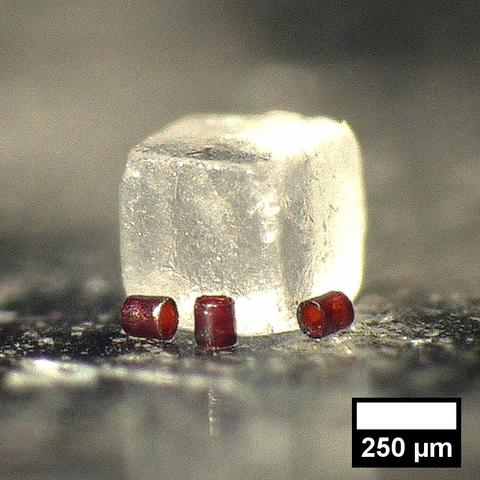
Not all gems are the precious stone kind. In the field of magnetic resonance imaging (MRI), a type of microscopic magnetic probes called geometrically encoded magnetic sensors (GEMS) are capable of enhancing MRIs.
However, these probes are still experimental and require expertise in nanofabrication. NIST researchers have developed a new method to make these GEMS that is not only faster and cheaper, but can be done in scientists’ own labs.
When you go to get an MRI to check a part of your body, the machine produces a strong magnetic field. This field affects the protons in the body by aligning their magnetic fields with the machine’s. The MRI scanner also releases a pulse of radio waves, which excites the protons for a brief period of time before they relax to their original aligned states.
As the protons flip between relaxed and aligned states, they emit radio waves, which are translated into images. The GEMS interact with the protons, causing the frequency of the radio waves to shift in a controllable manner, which can be read by the MRI scanner. The probes — shaped like a hollow cylindrical cell and about 10 times the size of a red blood cell — are also capable of shape-shifting.
They can shrink or expand depending on the microenvironment, causing their magnetic field to strengthen or weaken. This change can shift the frequency of nearby protons. The MRI scanner can measure this change and detect if the probes have changed shape due to a specific response, such as pH.
This research is related to ongoing work to develop smart contrast agents — substances that enhance MRI imaging — that can also be used as sensors. Learn more about how these probes are made.
Follow us on social media for more like this from all across NIST!

